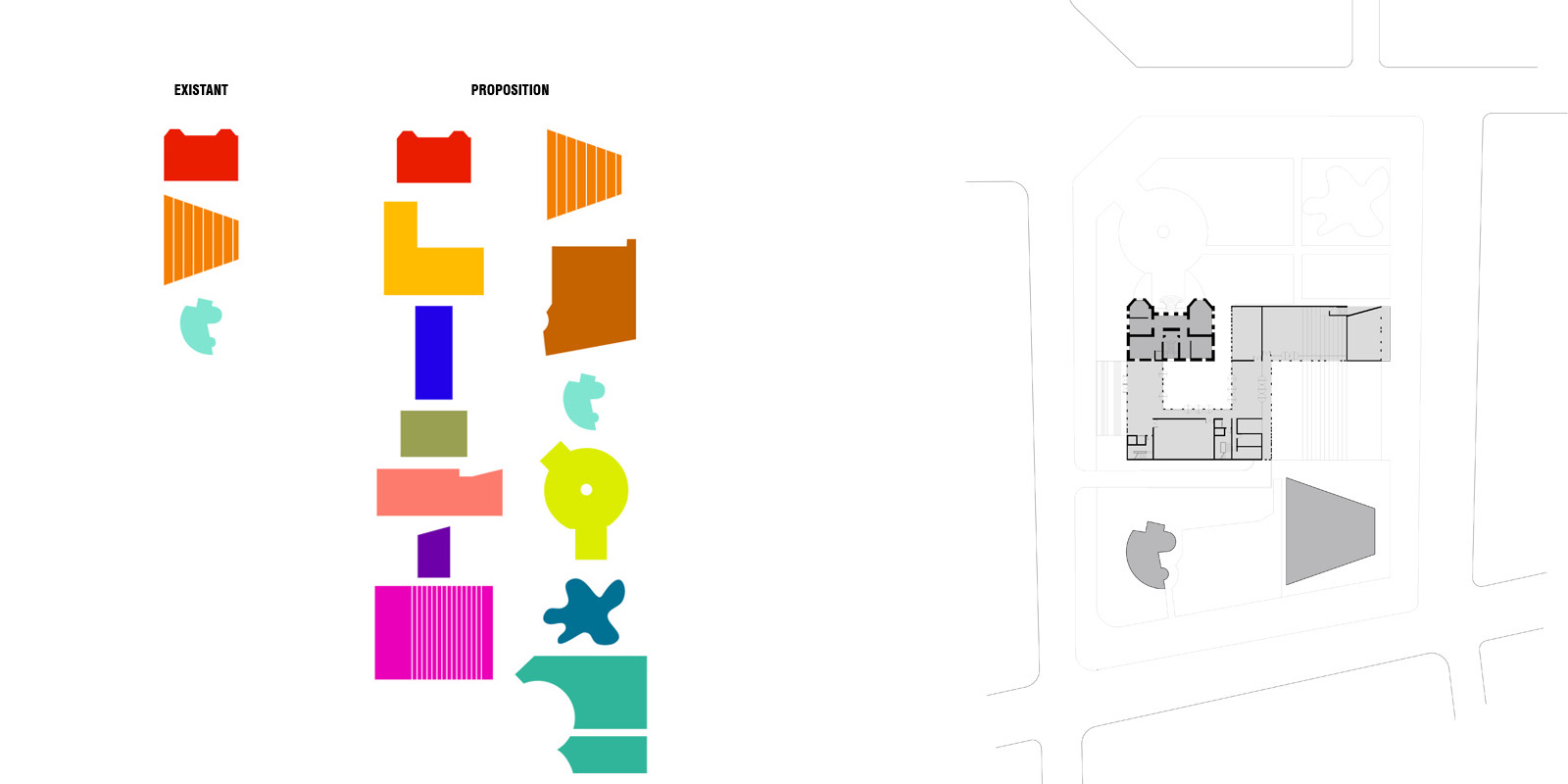Site/ Lieu : Rabat, Morocco/ Rabat, Maroc
Client/ Maître d’ouvrage : City of Rabat
Program/ Programme: New City Hall, museum, amphitheatre – competition/ construction de la nouvelle mairie de la ville, d’un amphithéâtre et d’un musée – Concours
Size/ Surface: 7.500 m²
Partner/ Partenaire: TEO architectes
Date: 2010
An extension to Rabat’s colonial city hall, this project asserts the changing role of municipal government in contemporary life. More than just an office building, a city hall is a forum for exchange between elected officials and the citizenry—an emblem of municipal democracy. The new civic center of Rabat introduces additional public programs, including a museum, a gallery, a playground, and an amphitheater, and integrates the existing restaurant and cinema into a cohesive civic block where the elected and the electors can meet on common ground. Dissimilar programs are placed in deliberate dialogue with one another—a public amphitheater and the halls of government, the playground and the president’s office, the contemporary extension and the colonial building—connected by a shared open space that bridges between the two. This programmatic diversity creates a center of civic life worthy of the capital.
Le projet proposé par OUALALOU+CHOI tient à renforcer une volonté de réinvestir le centre-ville, de permettre le dialogue entre la ville coloniale et la ville contemporaine. Il s’agit d’inscrire un bâtiment contemporain en échos avec le bâtiment existant, qui cherche à renforcer l’identité d’une architecture composée, élégante, monumentale et murale. Le projet de kilo a été voulu autant comme une proposition architecturale que comme une réponse urbaine à cette condition exceptionnelle. Une volonté forte s’affirme pour composer un véritable “îlot civique”, une place de la Mairie à l’instar des grandes capitales. Le projet propose de renforcer la frontalité existante en installant dans la continuité de l’existant un bâtiment-galerie qui marque la présence du jardin/esplanade dans sa dimension publique. Ce nouveau bâtiment bas et horizontal établit un programme public nouveau, un musée de la ville, une galerie municipale : un véritable lieu d’échanges entre les habitants et ce nouveau symbole du pouvoir municipal élu. Cette galerie qui renforce la frontalité et la présence du nouveau siège de la Municipalité, permet également de créer un amphithéâtre urbain, un symbole fort de la démocratie municipale.


